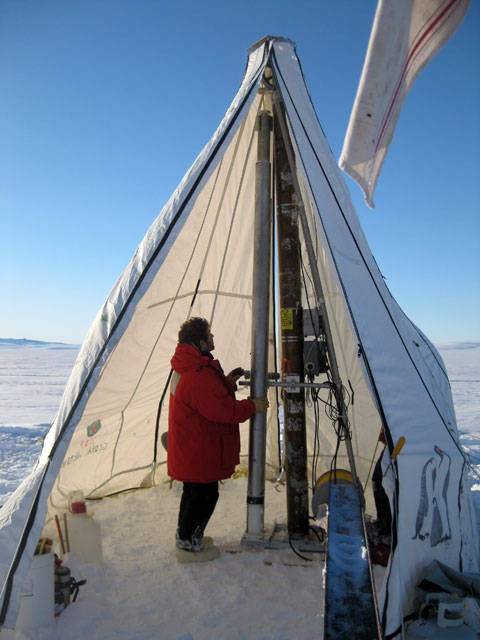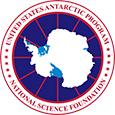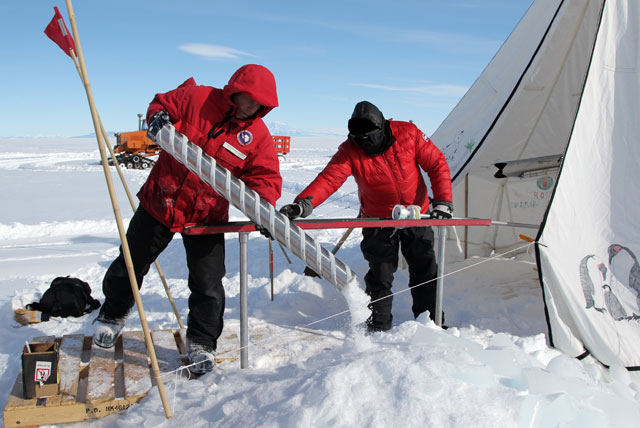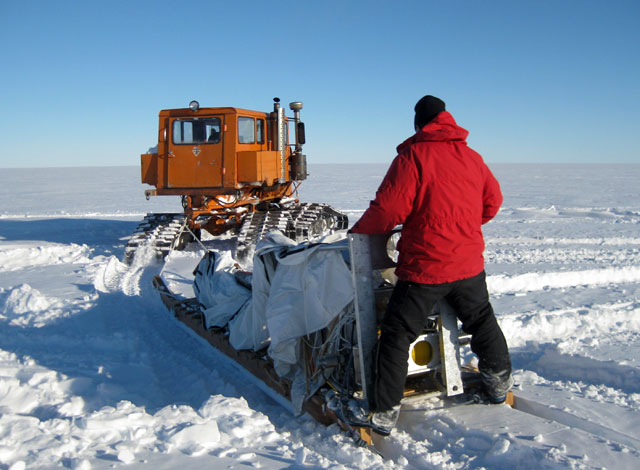WiredScientists use fiber optics, lasers to measure water temperature below icePosted January 6, 2012
Lasers aren’t just for evil geniuses in spoof movies who want to outfit sharks with the latest in weapon technology. Scientists are using fiber-optic and laser technology to make precise temperature measurements in places as diverse as Lake Tahoe and the arid soils in Nevada. A research team led by Dave Holland from New York University “We’ll be looking at whether this is a viable, portable technology,” said Holland, a professor of mathematics and atmosphere-ocean science, at McMurdo Station He is also one of several investigators on a logistically complex project to study how ocean water is eroding and thinning the underbelly of an ice shelf in West Antarctica. The fast-moving Pine Island Glacier is charging ever more quickly toward the sea as the ice shelf that corks it wears away from below due to upwelling of warm water onto the continental shelf in the Amundsen Sea region. [See related story — Antarctica's ground zero: Expedition heads to Pine Island Glacier region to study thinning ice shelf.] 
Photo Credit: David Holland
NYU graduate student Alon Stern watches over the drill as it bores through the ice shelf.
The project has been years in the planning, requiring a long logistics chain from McMurdo Station to a far, wild corner of West Antarctica. Holland has already done his time on the project, installing a trio of weather stations last year that will provide the researchers needed data about the atmospheric conditions influencing the ocean currents. Other members of the team, led by Bob Bindschadler Holland said the DTS system, potentially quickly deployable because of the small diameter hole required for the fiber optic cable, could play an important role in long-term monitoring of ocean temperatures around the continent’s icy fringes. He has joined forces with Scott Tyler “It’s not just a thermometer anymore; we can take the temperature of air, soil, or water at the same instant every 15 seconds, 24 hours a day, every [meter] for many kilometers,” Tyler said in a previous interview. How can a laser measure temperature? The laser light shoots down and back along a fiber optic cable. Based on the scattering properties of the light, a computer figures out temperature at one-meter intervals. Holland and his small team installed several fiber optic strings in an area called Windless Bight, a 200-meter-thick area of the McMurdo Ice Shelf. Co-principal investigator Victor Zagorodnov at The Ohio State University “It’s very much like the PIG [project] … the idea again is to get into the ocean cavity,” Holland said. The one-year, proof-of-concept project will fire laser light down each cable every six hours, gathering temperature data at one-meter increments down 800 meters to the seafloor. A spur-of-the-moment collaboration with scientists working for the Antarctica New Zealand He said the Kiwi researchers are interested in the temperature data because they want to learn more about a different sort of ocean-ice interaction below Windless Bight, where supercooled water from the south rises and instantly freezes, forming frazil ice, a sort of slushy ice, on the underside of the ice shelf. However, for about four months of the year, warm water from the north intrudes, making the frazil ice disappear. “We’ll be taking a look at that,” Holland said. But the grander hopes for the project are that it will lead to an array of temperature sensors that would feed into models of ice dynamics. Scientists concerned with predicting Antarctica’s future contributions to sea-level rise are woefully short on details about how the ocean affects ice sheet stability. “Warm waters are below the surface, so you can’t see them from space. You can’t use remote sensing, or satellites. You actually have to put instrumentation into the ocean to detect warm waters at depth,” Holland said. “Sea-level modeling is … complex and uncertain. We’re not up to that task yet.” NSF-funded research in this story: David Holland, New York University, Award No. 1043395 |



For USAP Participants |
For The Public |
For Researchers and EducatorsContact UsU.S. National Science FoundationOffice of Polar Programs Geosciences Directorate 2415 Eisenhower Avenue, Suite W7100 Alexandria, VA 22314 Sign up for the NSF Office of Polar Programs newsletter and events. Feedback Form |



